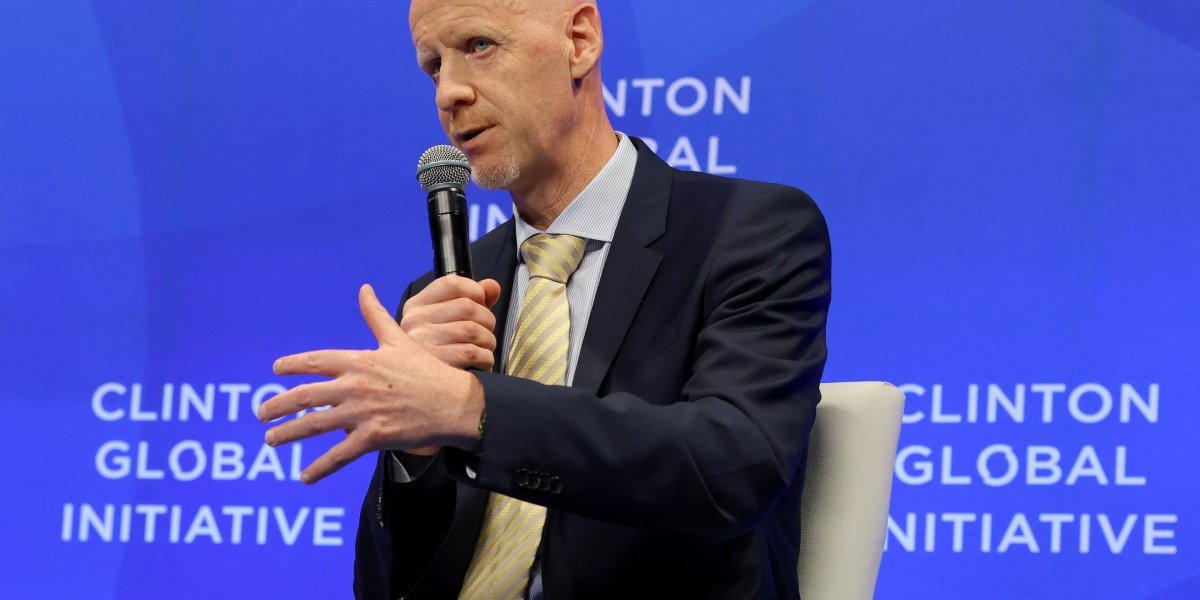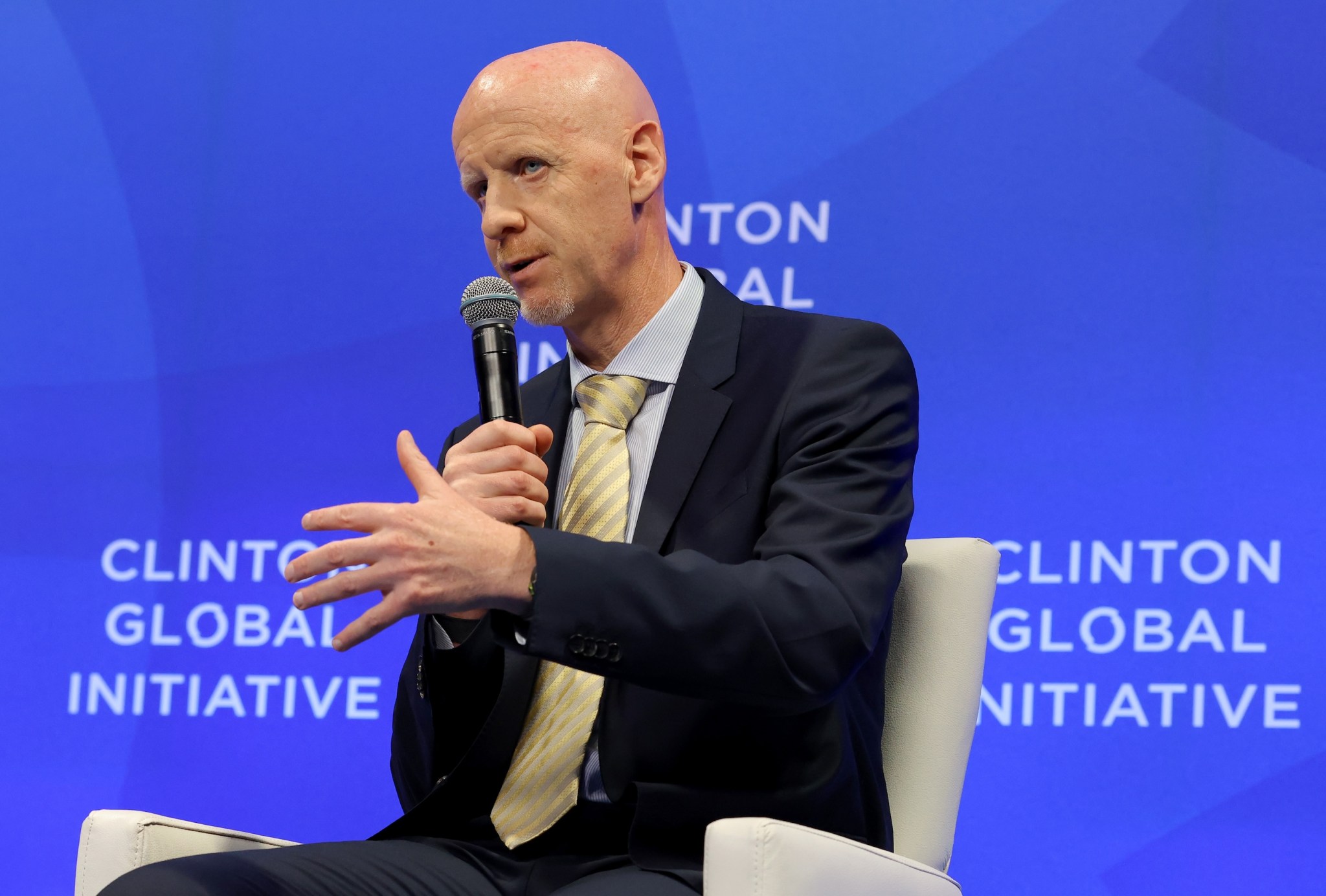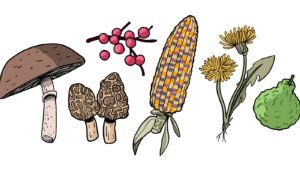
GoFundMe CEO says the economy is so bad that more of his customers are crowdfunding just to pay for their groceries

GoFundMe’s CEO just said the quiet part out loud: In this economy, more Americans are crowdfunding groceries to get by.
president GoFundMetim cadogan, He said Yahoo! finance The economy is facing such significant challenges that more Americans are raising money to buy food — a striking data point that captures the widening gap between household budgets and basic needs.
In a recent interview on Opening the bid without liquidation In a podcast with Brian Suozzi, he described a marked uptick in drives for necessities like groceries, and a shift from one-time emergencies to everyday survival.
“The basic things you need to survive have risen significantly in the past three years in almost all of our markets,” Cadogan said.
This development highlights the new economic reality for many Americans: persistent inflation, rising borrowing costs, and meager fiscal cushions, which are forcing many families to sort bills, reconcile debt, and seek help in new ways.
Grocery is the new emergency
Cadogan’s observation — that more people are asking strangers for help paying for basic food items — represents a sobering shift for a platform historically associated with medical bills, disaster relief, and community projects. When the cost of food exceeds salaries beyond the breaking point, crowdfunding turns from altruism to a parallel safety net.
Previously luck To cover the long tail of inflation, consumers’ coping tactics included trading up brands, reducing baskets, delaying car repairs, and relying on credit cards. The shift Cadogan describes suggests that these tactics have spiraled out of control for a growing segment of the country, especially younger, low-income families who rent, move, and carry variable-rate debt.
Inflation shock
Even as headline inflation declines from its peak, high price levels remain embedded in household balance sheets. luck Tracked how cumulative inflation, not just monthly publications, affects households. For example, groceries are now more expensive than they were two or three years ago, rents are rising again, and child care is a drain on paychecks.
Wage gains helped many workers, but unevenly and often after costs had already jumped. For households without savings reserves, the higher cost baseline is the real story. This background explains why the uptick in grocery drives on GoFundMe is not just a curiosity, but rather a barometer of the current economy.
The credit crunch is on the kitchen table
Household balance sheets have been severely reduced Stubbornly high prices On necessities as well as steeper borrowing costs on credit cards and car loans. luckReports have highlighted High delinquency Interest rates among younger borrowers and pressure on student loan repayments resume after a long pause. For some, the social capital of friends, community groups, and online donors is now replacing financial capital. Grocery crowdfunding is a last-ditch solution in a system where wages, benefits, and public support haven’t fully bridged the gap.
Significant wealth transfer meets levels of giving
Cadogan also views this moment as an opportunity: The United States is entering a historic transfer of wealth, with baby boomers transferring tens of trillions to heirs and charities. However, total charitable giving as a share of GDP struggles to exceed the 2% level sustainably. The key challenge is to convert private balance sheet strength into large-scale public generosity. luck I’ve explored Paradox Robust asset markets – fueled by stocks, real estate, and private investments – coexist with widespread financial insecurity. The transfer of wealth can amplify or narrow this disparity, depending on whether heirs and living donors are committed to more dynamic, needs-based giving.
Generation Z, Millennials, and the New Donor Thesis
GoFundMe’s CEO hopes that younger donors, who are often values-driven, digitally native, and community-oriented, will push giving higher and faster.
These groups already operate mutual aid and micro-donation networks online; The question is whether this instinct can expand beyond single campaigns to sustainable support for food security, housing stability, and local services.
If employer matching, donor-advised tools, and dedicated funds become easier to use—and if transparency and immediacy remain high—small donations can snowball into measurable aggregate impact.
What comes next?
Many Americans remained One shock away from getting into arrears. More GoFundMe campaigns for groceries fit this narrative and raise a challenge for high-net-worth individuals on the cusp of inheritance decisions.
if Transfer of wealth is the economic story of the decade, the conversion of generosity may be its moral counterpart. The ability of giving to rise meaningfully above its long-term share of the economy will hinge on channeling today’s compassion into the infrastructure of tomorrow, so that no one has to reach beyond a hat to put food on the table.
For this story, luck Use generative AI to help with the rough draft. An editor verified the accuracy of the information before publication.












Post Comment